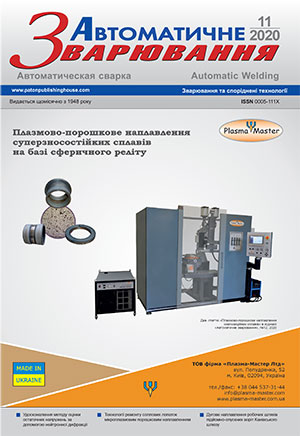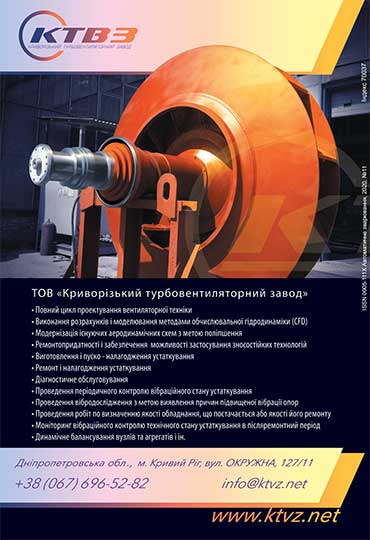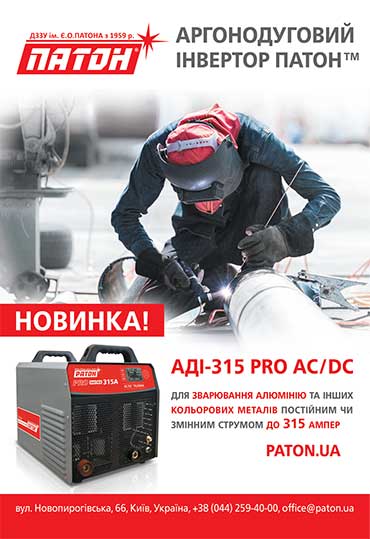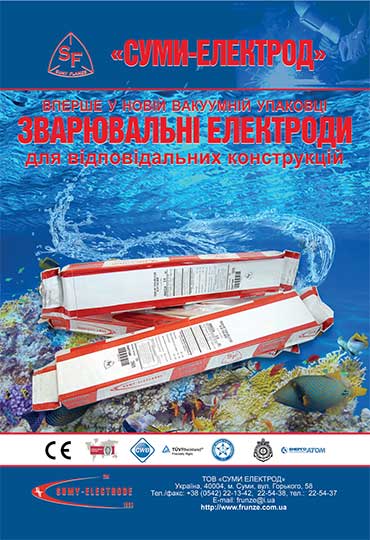| 2020 №11 (08) |
DOI of Article 10.37434/as2020.11.01 |
2020 №11 (02) |
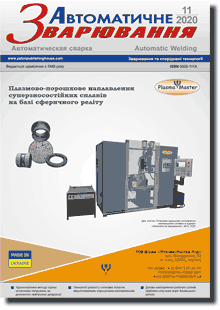
"Avtomatychne Zvaryuvannya" (Automatic Welding), #11, 2020, pp. 3-8
Influence of composition of deposited metal and thermodeformation cycle of surfacing on stability of joints of wheel steels with dispersion nitride and solid-soluble hardening to cold cracks formation
V.D. Poznyakov, O.A. Gaivoronsky, A.V. Klapatyuk, A.M. Denysenko, S.V. Shmygelsky
E.O. Paton Electric Welding Institute of the NAS of Ukraine. 11 Kazymyr Malevych Str., 03150, Kyiv, Ukraine. E-mail: office@paton.kiev.ua
Current trends in the development of railway transport increase the load on the axle and the speed of freight trains. The relevant task is to create technologies for the production and restoration of railway wheels, which provide the extension of their service life in different operating conditions. To solve this problem, it is necessary to study the influence of different factors on the technological and operational strength of welded joints of wheel steels with dispersion nitride and solid-soluble hardening and develop technology for restoring the rolling profile of all-rolled wheels of freight cars. It was established that the change in resistance to delayed fracture of the HAZ metal of wheel steels with dispersion nitride and solid-soluble hardening is significantly influenced by the carbon content in steel and the cooling rate during welding. Diffusion hydrogen, contained in the deposited metal, getting into HAZ, significantly reduces its resistance to delayed fracture. In the new wheel steel, the carbon content should not exceed 0.55%. Under other conditions, it will be impossible to provide the proper level of resistance of joints to the formation of cold cracks during surfacing of new railway wheels. 11 Ref., 3 Tabl., 4 Fig.
Keywords: arc surfacing, wheel steel with dispersion nitride and solid-soluble hardening, heat-affected-zone, structure, cooling rate, diffusion hydrogen, cold cracks
Received: 02.11.2020
References
1. Uzlov, I.G. (2019) Advanced processes of manufacturing and quality of railway wheels. Stal, 5, 69-72 [in Russian].2. Railway wheels and treads KLW. Ukraine, Interpipe NTRP [in Russian] www.interpipe.biz
3. Uzlov, I.G., Babachenko, A.I., Dementieva, Zh.A. (2005) Influence of microalloying of steel on fracture toughness of railway wheels. Metallurgiya i Gornorudnaya Promyshlennost, 5, 46-47 [in Russian].
4. Babachenko, A.I., Litvinenko, P.L., Knysh, A.V. et al. (2011) Improvement of chemical composition of steel for railway wheels providing their increased resistance to defect formation on roll surface. In: Fundamentals and applied problems of ferrous metallurgy. Ukraine, IFM, 23. 226-233 [in Russian].
5. Ivanov, B.S., Filipov, G.A., Demin, K.Yu. et al. (2007) Modification of wheel steel by nitrogen. Stal, 9, 22-25 [in Russian]. https://doi.org/10.3103/S0967091207090112
6. Makarov, E.L. (1981) Cold cracks in welding of alloyed steels. Moscow, Mashinostroenie [in Russian].
7. Hrivnak, I. (1984) Weldability of steels. Moscow, Mashinostroenie [in Russian].
8. Gaivoronsky, A.A. (2013) Cold crack formation in welding of high-strength carbon steel. Svarka i Diagnostika, 5, 27-32 [in Russian].
9. Poznyakov, V.D. (2008) Improvement of delayed cracking resistance of welded joints of cast hardenable steels. The Paton Welding J., 5, 7-12.
10. Musiyachenko, V.F., Zhdanov, S.L. (1981) Study of mechanism of cold crack development by acoustic emission method. In: Cracks in welded joints. Bratislava, 130-136.
11. Gaivoronsky, A.A. (2014) Resistance to cold crack formation of HAZ metal of welded joint on high-strength carbon steels. The Paton Welding J., 2, 2-11. https://doi.org/10.15407/tpwj2014.02.01

